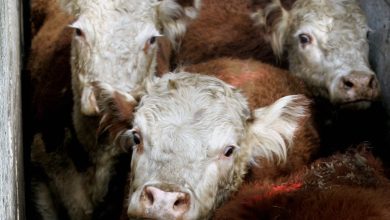Lynx Cats – Key Facts, Information & Pictures – Animal Corner
lynx is the name given to four wild cats of the felid family. The four species of lynx are: the Canadian lynx (lynx canadensis), the Eurasian (or Siberian) lynx (lynx lynx), the bobcat (lynx rufus) also known as the wildcat, and the Spanish (or Iberian) lynx (lynx pardinus). ). the caracal, although it is sometimes called the Persian lynx or the African lynx, does not belong to this genus.
The Spanish lynx population continues to decline and is one of the most endangered cats in the world. The Canadian lynx is becoming very rare in the northern United States due to hunting, habitat destruction, and competition from the more aggressive bobcat.
The bobcat is the most successful of all bobcats, being highly adaptable in both habitat and prey. The Iberian lynx is one of the world’s rarest mammals and is classified as the world’s most endangered feline species due to its low population, limited number of habitats, and small area of distribution.
Bobcat populations rise and fall in synchronization with snowshoe hare population cycles. when hares are plentiful, more lynx survive to breed and their numbers increase. when the hare population drops, which happens every 10 years, many lynx starve to death.
description of the lynx

Bobcats are medium-sized cats whose coats vary in color depending on their climatic range. the lynx in the southern regions of its range tends to be shorter-haired, darker in color and have smaller legs, while in the northern regions its fur is thicker and lighter in color (for camouflage ), and its paws are larger and much more padded to deal with the cold and snow.
all lynx species have white fur on their chests, bellies, and undersides of their feet. Bobcats have short tails, long whiskers, and characteristic tufts of black hair at the tips of their ears. the lynx has long front and hind legs that support its thick body that is 65 to 130 centimeters (26 to 51 in) long and weighs about 11 to 37 pounds (5 to 17 kilograms). the lynx has a tail length of 2 to 6 inches (5 to 16 centimeters).
The Canadian lynx is smaller than the Eurasian lynx and has a grayer coloration. Like all cats, the lynx has exceptional night vision due to a mirror-like layer of cells in its eyes called the tapetum lucidum. light that is not absorbed by the receptor layer of the retina strikes the tapetum lucidum and is reflected back to the receptor layer of the retina for another opportunity for absorption. that’s why cat eyes glow in the dark. their sensitive whiskers, quick reflexes, and acute hearing also help lynx hunt at night.
habitat of the lynx
Bobcats prefer cool, wild areas and high-elevation forests with dense covers of grass, sedge, and shrubs. lynx cats have very large ranges, by far the largest range of any other feline. the lynx burrows in rock crevices or under ledges. In harsh and severe weather conditions and when breeding, the lynx takes refuge in caves or in trees or hollow logs. although the Iberian lynx does not seem to fear man, it will not live in areas where permanent human settlements are established.
lynx diet
Bobcat cats are carnivorous, hunting by day, and prey on a wide range of animals, including reindeer, roe deer, small deer, caribou, chamois, birds, small mammals such as snowshoe hares, fish, sheep, and goats . Although the lynx hunts mainly on the ground, it can climb trees and can also swim, catching fish to help its diet. Although not a timid hunter, the lynx will rarely contest its prey if faced with other carnivores and will leave the prey uneaten. the Eurasian lynx lives in the forest and feeds on ungulates such as deer, while the Iberian lynx prefers scrub vegetation and feeds mainly on rabbits. the lynx hunts by stalking or ambushing its prey.
Lynx behavior
Bobcat cats are often solitary creatures, however small groups of lynx occasionally hunt and travel together. male territories are larger and may overlap several female territories. lynx cats are agile climbers and spend most of their time on tree branches, waiting for prey, such as weaker mammals and ground birds, to pass beneath them. Bobcats are highly vocal animals and can make an incredible variety of hisses, chatters, and meows.
reproduction of the lynx
The lynx’s breeding season occurs in late winter. the female lynx gives birth to 2-4 kittens after a gestation period of 56-70 days, once a year. kittens weigh between 200 and 300 grams at birth. the female will nurse the kittens for 5 months, although some kittens can eat meat at one month of age.

male lynx do not participate in parental care of the kittens. kittens and their mother will stay together until the following winter mating season, and siblings may stay together for a time after they have been separated from their mother. the lifespan of the lynx is 12 to 20 years.
conservation status of the lynx
Hunting lynx cats is illegal in many countries. The Spanish (Iberian) lynx is critically endangered, and the killing of any individual has been prohibited since the 1970s in Spain and Portugal. in 2000, the usa the fish and wildlife service designated the canada lynx as a threatened species. Bobcats are hunted for their fur and by farmers to protect their farm animals, as they are considered predators of domestic animals.



